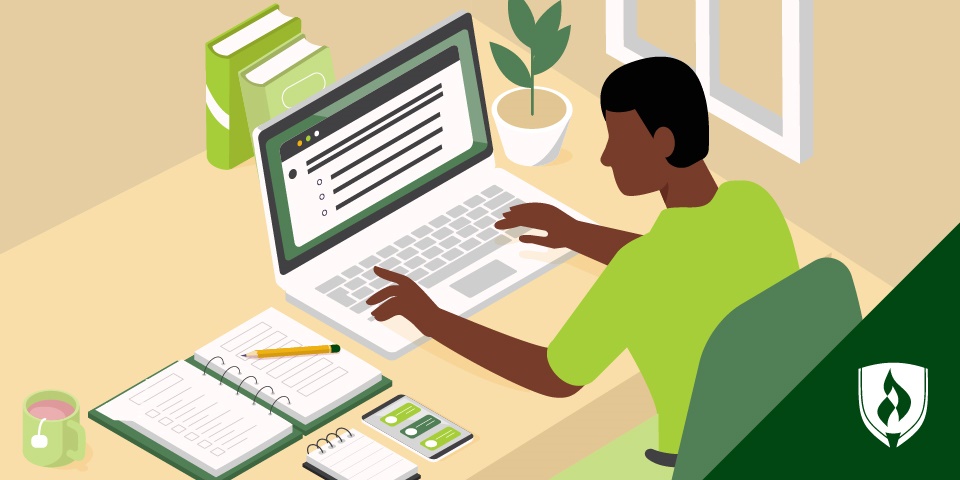
Anyone attending college knows there is a barrage of information students are expected to keep straight. You have a handful of classes, and each of those classes has a breakdown of units, schedules and readings, and by the time you think you’ve got the hang of it — a new semester starts, and the task of getting organized begins again.
But spending time and energy trying to keep all of the new information straight isn’t an efficient use of your investment in college. Taking excellent notes and keeping them organized will help you focus on learning the information you need to know for the test. We’ve asked professionals in multiple fields for their top tips in note-taking. Whether you prefer to take notes digitally or by hand, read on! There’s a section for you.
For all note-takers
1. Highlight the key point
“What is the key point that the professor is making? Write that down,” says Dr. Jan Yager, a professor and author who is writing a book on how students can make their time in college more efficient. “Make sure that for each and every class or lecture that you attend, you have one overriding concept that is behind that class.” Key points will not only make your review time much easier, they will also help you actively understand the point of each lecture.
2. Take the notes you can’t get elsewhere
Jenna Elkins, Media relations coordinator for TechnologyAdvice, has often watched people scrambling to write down everything they see in a PowerPoint presentation and missing all the important points a speaker says aloud — when those are often the most important points to write down. “Ask your professor or the person presenting if PowerPoint slides are available to view after the presentation. Most of the time the answer is yes!”
3. Follow the cadence
“The main point is always indicated by cadence emphasis,” says Pamela Hanson who spent time as a paid note taker in college. She says that following the method of cadence in any speaker’s presentation will teach you what the speaker feels is the most important. It will be emphasized in their voice. Anything your professor thinks is most important should probably be prioritized in your notes and your study.
4. Record possible questions
Yager advises students to keep a record of questions relating to the material as they go along. This makes it easy to follow up with professors, or to offer a question at the end of the lecture. Keeping a list of questions will also give you easy reference points when you need to re-engage with your notes for a paper or project.
5. Make it visual
Practice management advisor, Joyce Brafford says “there’s no shame in drawing charts or shapes if it aids your understanding.” Whether you are writing or typing, find ways to add visual interest to your notes. Yager also emphasizes the impact of visual aids and suggests diagrams, illustrations, color highlighters, or any other kind of visual that helps you emphasize what is most important to remember.
6. Review after class
“Whenever possible, review your notes within a few hours to edit and expand on the notes that you took in class,” says Hasmik Petrosian, manager of UNI-Prep Institute. Petrosian believes an extra scan and adjustment of the notes you just took will allow the material to really take root in your brain. “If you don't do this right away, you will likely not remember the details a few days later.”
For Handwritten Notes
7. Utilize the kinesthetic value
“Many studies show that writing by hand boosts learning in a way that doesn't happen when you're typing,” says Jennifer Schweighofer, author at Universal Publishing. Schweighofer references the work of Dr. Karin James, saying “her scans show that when children write by hand, their brains ‘light up’ with adult-level activation. This activation does not occur when they are typing.” Schweighofer believes the combination of kinesthetic and visual stimulation that occurs when students write by hand, helps them to better remember and understand the material. “With handwriting, we slow down and become more connected with what we're writing.”
8. Mark the date
While this concept applies to both electronic and handwritten notes, it might be extra essential for students going the ‘old-fashioned’ route. Yager suggests dating your notes and numbering the pages to help you keep things in chronological order, and to help jog your memory of the class time you took notes from.
9. Handwrite, then type
John Paul Engel of Project Be The Change advocates for taking notes by hand, but then typing them up at the end of the day. This gives you a chance to polish them up a bit, have all the convenience of digital organization, and imbed the notes deeper into your memory while keeping the note-taking experience simple and tactile.
Engel also recommends reducing those notes to one-page study guides that you can carry around with you and look over whenever you are stuck waiting somewhere.
“I never earned less than an A in the classes I made one-page study sheets.”
For Digital Notes
10. Make folders & documents
Simple and straightforward, the ease of organizing notes in desktop folders attracts both the tech-savvy and the tech-allergic. “I always make a folder for the new semester. Within that folder, I make a folder for each class, and for each class I have a new word document titled notes,” says Leah Villanueva. This technique also allows you to drop forms, web research and any other electronic data into the appropriate class folders, so nothing is lost. When exam time rolls around, Villanueva prints off her notes document from each class to study in hardcopy.
11. Use Microsoft OneNote
Business management associate, Shelley Bliss, recommends this easy-interface app for accessing notes from any of your devices and grouping them for fast access. It also comes with a web-snipping feature for a quick capture of online content, as well as a neat sharing tool for collaborative work or last minute proof-reads. Read more at OneNote.
12. Use Evernote
“I used to use legal pads and post it notes. And while I could usually keep up with them, having my own cloud note library is so much better!” says real estate strategist, Michael Bunch. “I have Evernote on all my devices. That means I have searchable, accessible notes wherever I go.” Bunch finds the Evernote app particularly appealing because of its open, flexible format. Good ideas, or pertinent questions from a lecture can come suddenly, and he loves being able to capture them easily from any device on hand. Read more at Evernote.
13. Cite sources
Sometimes you record part of a professor’s lecture, sometimes you might take a fragment from an online article or a comment from a peer in class. Author Susan Froetschel has heard many students and writers called out for plagiarism that often began as a simple error in the note-taking process.
Even if you put the notes in quotation marks, you might easily forget who and where they came from when it comes time to cite them in a paper. Save yourself hassle and potential plagiarism issues by immediately citing anything you add to your notes. Froetschel recommends putting borrowed material in bright colors or strange fonts for an extra visual differentiation.
For time management & beyond
Now that you have some ideas on how to boost the efficiency of your note-taking, you might be wondering how to streamline other aspects of your college experience. Read this article for 6 Time Management Tips for College Students.




